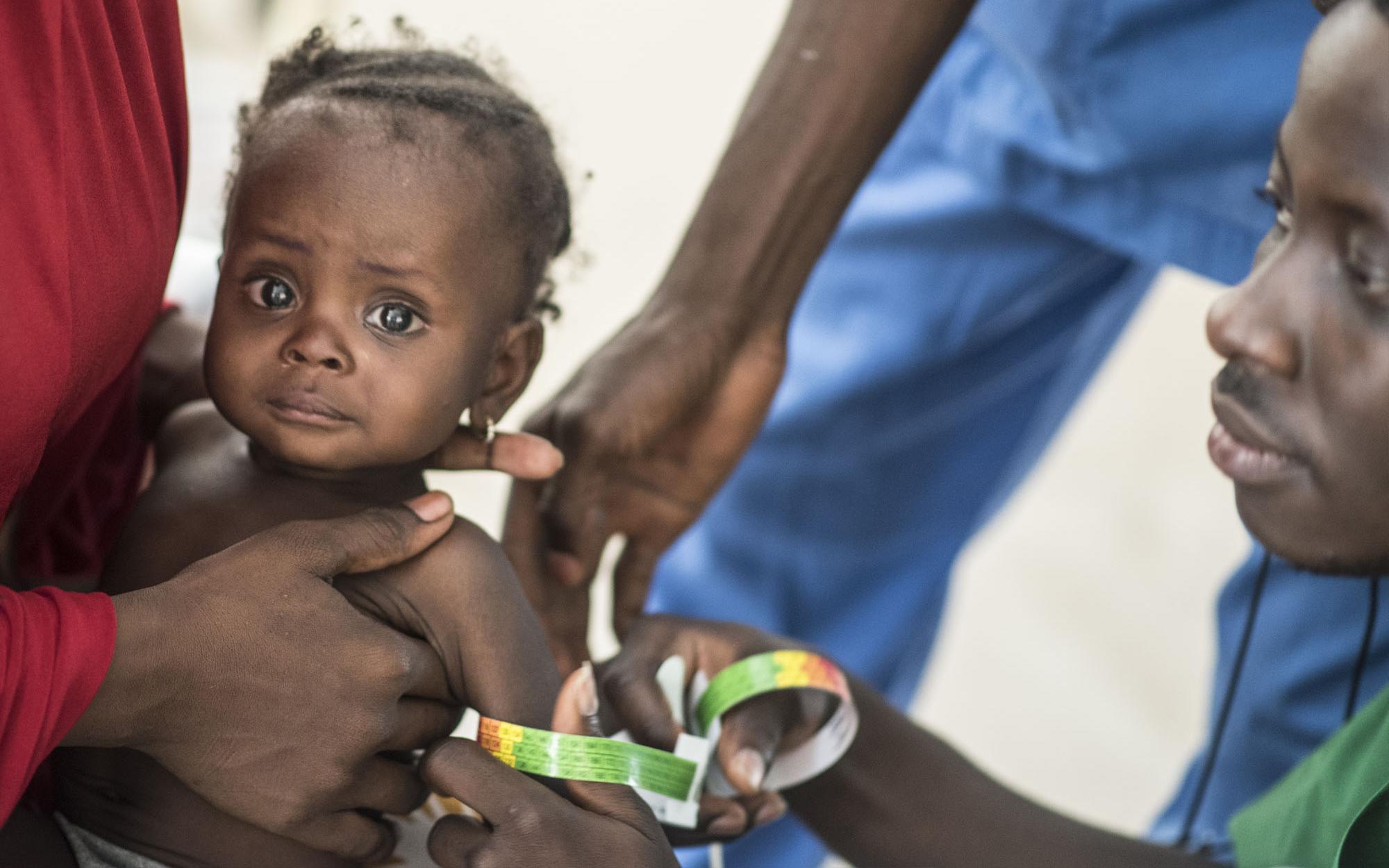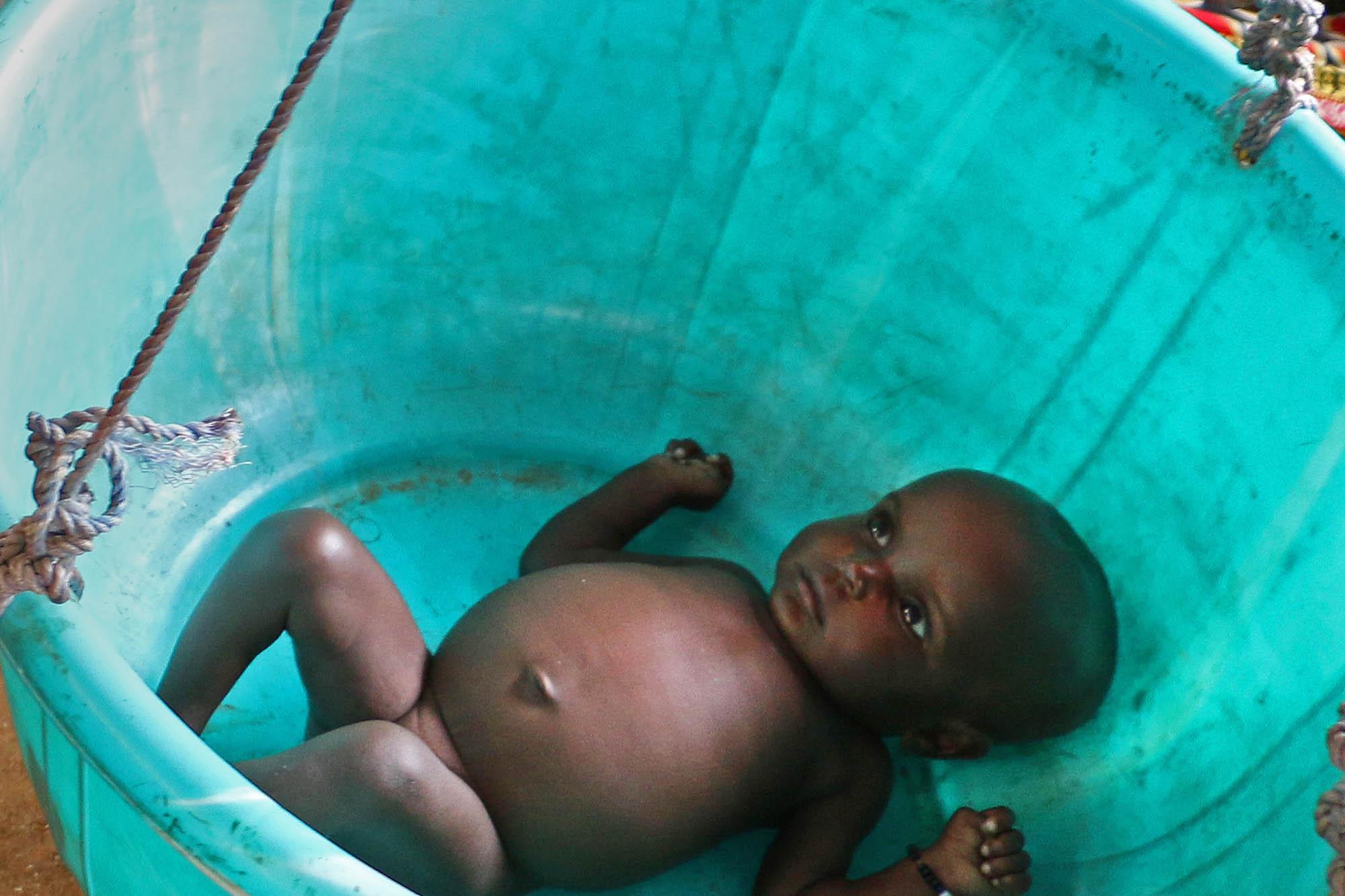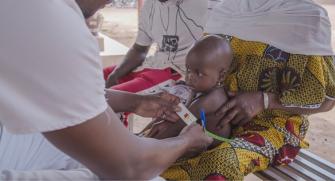Malnutrition
Malnutrition is a global problem with important consequences for survival, healthy development, and the economic productivity of individuals and societies. Acute malnutrition, characterized by severe muscle wasting, is associated with a significantly increased risk of morbidity and mortality affecting 52 million children under five years of age worldwide. Chronic malnutrition, characterized by stunting (i.e. suboptimal linear growth), is strongly linked to immunodeficiency, compromised cognitive development, and consequently associated with increased mortality; globally, it affects 165 million children1.
Simplifying nutritional treatment procedures increasing access to care
The standard of care for acute malnutrition follows a community-based management model commonly referred to as CMAM2. Centered on outpatient care for non-complicated cases, the CMAM model has been proven to be both clinically effective (achieving high cure rates and low case mortality) and programmatically feasible (cost-effective and resulting in low default rates). The treatment and prevention of chronic malnutrition is less clear; risk factors for suboptimal linear growth may begin in utero, suggesting that the first 1000 days of life —from conception to a child’s 2nd birthday—constitutes a critical window for effective nutritional support for both children and mother3.
The 2nd UN Sustainable Development Goal proposes a strategy to end all forms of malnutrition by 2030. Epicentre is committed to combatting the global burden of malnutrition through research aimed at simplifying nutritional treatment procedures and increasing access to care.
Program monitoring and evaluation, how to understand MUAC

The MUAC 120 study assesses the operational implications and nutritional outcomes of a treatment model for uncomplicated severe acute malnutrition (SAM) using the mid-upper arm circumference measurement (MUAC) as the sole anthropometric criterion for admission and discharge from treatment compared to the standard protocol combining both MUAC and weight for height z-score. This study, the first of its kind in Niger, will enable exhaustive documentation of the relevant results and operational implications when using a MUAC-only model in the management of uncomplicated SAM.
Case control and cohort studies, understanding malnutrition and the use of antibiotics
Operational experience with the usage of non-routine antibiotics for the treatment of uncomplicated SAM
With this prospective cohort study, Epicentre sought to evaluate the effect of non-routine antibiotic use for the treatment of uncomplicated SAM in an operational context. The treatment outcomes of 1,776 children with SAM who were given antibiotics only on clinical indication were compared to 6,185 children with SAM who were systematically administered amoxicillin at admission to nutritional treatment. In this operational setting, there was no difference in the rate of nutritional recovery between groups. These results suggest that the routine use of antibiotics in large-scale nutrition programs may not be necessary to maintain high rates of nutritional recovery in all settings. Global guidance may suggest context-specific practice, given the emergence of antibiotic resistance and difficulties in scale-up.
Clean Kids study
Preventing nosocomial Infections

As child mortality in inpatient settings remains substantial, especially in resource-limited settings, the Clean Kids study aimed to assess the risk of hospital-acquired infection and multi-drug resistance among hospitalized severe acutely malnourished children. Data on the incidence of health-care associated infections (HCAI) are sparse and deaths attributable to these infections are under-reported, but the burden of HCAIs is hypothesized to be especially high in sub-Saharan Africa due to poor hand hygiene, lack of access to clean water, and patient malnutrition. We describe the impact of HCAI on children admitted to inpatient treatment for SAM. Epicentre wants to improve operational guidance and guide future research to reduce the risk of child mortality and the emergence of multi-drug resistance associated with HCAIs by increasing basic infection control, hygiene practices and antibiotic stewardship.
Field and clinical trials, testing routine treatments
Routine amoxicillin for uncomplicated severe acute malnutrition in children
This double-blind placebo-controlled trial of 2,412 children in Niger explored whether routine use of antibiotics should be included in the management of uncomplicated SAM in children given limited evidence for efficacy and the increasing risk of antibiotic resistance. There was no significant difference between groups in the primary outcome of nutritional recovery at eight weeks suggesting that in settings with adequate primary healthcare, routine antibiotics provide no added benefit. There is every reason to believe that the systematic use of antibiotics in the treatment of uncomplicated SAM is not useful and can contribute to the emergence of antibiotic resistance.
Flexible outpatient treatment
Reduced schedule of follow up for uncomplicated severe acute malnutrition
It is estimated that only 15% of children with SAM receive treatment each year. While there are many reasons for low program coverage, there has been little high-quality research on the use of alternative delivery models that could increase treatment of uncomplicated SAM among young children. Important research gaps in the evidence base therefore remain, including a lack of information on the feasibility, acceptability, safety and effectiveness of alternative delivery models. Epicentre wants to expand the evidence base. We are conducting a cluster randomized trial in Nigeria where 10 health centers were randomized to one of two schedules of treatment: (1) standard weekly visits or (2) monthly visits with support to caregivers for home-based surveillance. This study is intended to provide programs with greater flexibility to consider more innovative models of treatment and to extend operations into areas where weekly follow up is not feasible.






